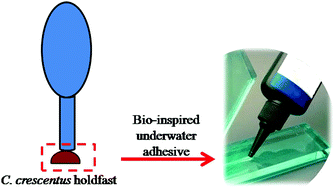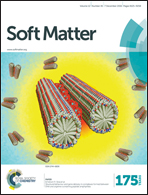Scaling down for a broader understanding of underwater adhesives – a case for the Caulobacter crescentus holdfast
Abstract
The adhesion of two materials in the presence of water is greatly impeded by a boundary layer of water between the adhesive and the adherend, resulting in adhesive failure of most synthetic adhesives; however, life evolved first in water and there are many aquatic organisms that have to overcome this impediment to underwater adhesion. For example, multicellular aquatic organisms like the mussel, sandcastle worm and the caddisfly larva employ well-studied adhesive mechanisms for sticking in the presence of water. Unicellular organisms such as bacteria also make use of various means for attaching to surfaces, within similar environmental conditions. Prominent among them is the aquatic bacteria, Caulobacter crescentus which utilizes a unique adhesive secretion, the holdfast, to adhere strongly in the presence of water. Here we review the attachment mechanisms of some multicellular aquatic organisms and compare the similarities and differences in the composition and structure of the C. crescentus holdfast, which holds promise as a potential source for bio-inspired synthetic underwater adhesives with prospective applications in medicine, engineering and biomimetics.



 Please wait while we load your content...
Please wait while we load your content...